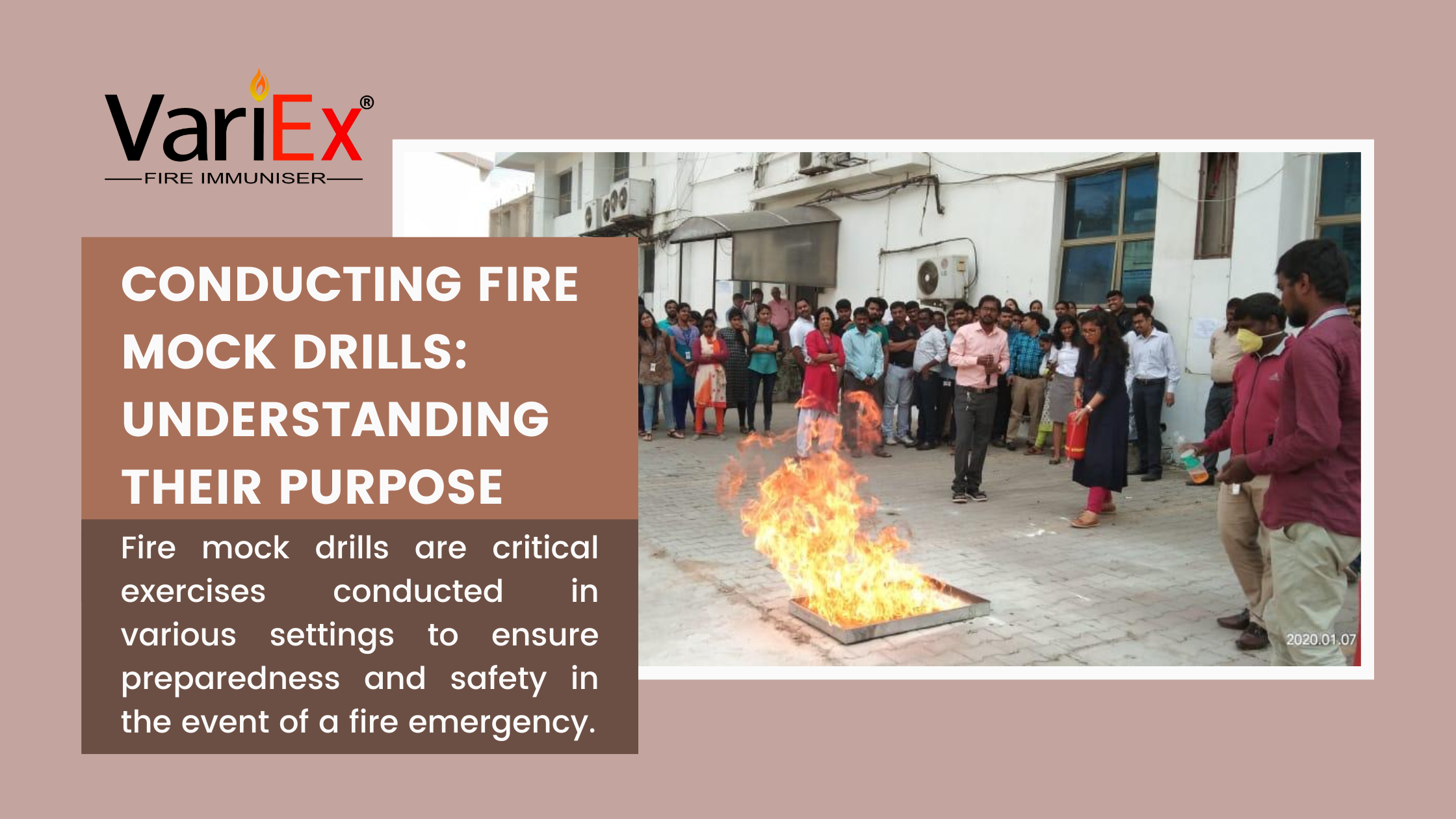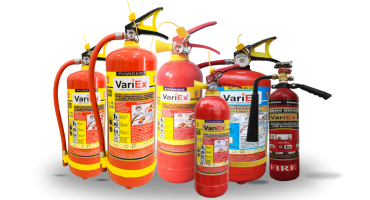![]()
Fire Immuniser
+91-7829629111
Email: info@variex.in
Varistor Technologies Pvt. Ltd.
Block-1, First Floor, Ardente Office One, Hoodi Circle, ITPL Main Road, Bengaluru, Karnataka 560048, IN
Conducting Fire Mock Drills: Understanding Their Purpose
Fire mock drills are critical exercises conducted in various settings to ensure preparedness and safety in the event of a fire emergency. These drills simulate real-life scenarios to familiarize individuals with evacuation procedures, use of fire safety equipment, and coordination among personnel. Understanding the purpose of fire mock drills is essential for maintaining safety standards and protecting lives.
What is a Mock Drill?
A mock drill is a structured exercise designed to simulate a specific emergency situation, in this case, a fire emergency. It involves creating a scenario where participants must respond as they would in a real emergency, without the actual threat to life or property. Mock drills typically include activating fire alarms, practicing evacuation procedures, and testing the functionality of fire safety equipment like extinguishers and emergency exits.
Importance of Fire Mock Drills
- Emergency Preparedness: The primary purpose of fire mock drills is to prepare individuals to respond promptly and correctly during a fire emergency. Regular drills help employees or residents understand their roles and responsibilities, reducing panic and confusion during an actual incident.
- Testing Systems and Equipment: Mock drills allow for the testing of fire alarm systems, smoke detectors, fire extinguishers, and other safety equipment. Identifying malfunctioning equipment during drills ensures that necessary repairs or replacements can be made before they are needed in a real emergency.
- Training and Education: Drills provide valuable training opportunities for personnel at all levels. Participants learn how to use fire extinguishers effectively, navigate emergency exits, and assist others in evacuating safely. This training can save lives by ensuring everyone knows what to do when faced with a fire.
- Building Confidence: Familiarity breeds confidence. By practicing evacuation procedures and emergency responses regularly, individuals become more confident in their ability to handle a fire emergency. This confidence translates into quicker, more effective responses when faced with a real fire situation.
- Identifying Weaknesses: Mock drills help in identifying weaknesses in emergency plans and procedures. Observations and feedback from participants and observers can highlight areas that need improvement, such as better signage, clearer evacuation routes, or enhanced communication protocols.
- Compliance and Regulations: Many industries and jurisdictions have specific regulations or guidelines mandating regular fire drills. Conducting drills not only ensures compliance but also demonstrates a commitment to safety and preparedness to regulatory authorities and stakeholders.
Benefits of Mock Drills
- Emergency Preparedness: The primary purpose of mock drills is to prepare individuals and organizations to respond swiftly and effectively during a fire emergency. By practicing evacuation routes and procedures, participants gain familiarity with the steps needed to evacuate safely, minimizing confusion and panic in a real crisis.
- Training and Skill Development: Mock drills provide valuable training opportunities for personnel at all levels. Participants learn how to use fire extinguishers correctly, operate emergency alarms, and assist others in evacuating safely. This training enhances their skills and readiness to handle emergencies competently.
- Equipment Testing and Maintenance: Conducting mock drills allows organizations to assess the functionality of fire safety equipment such as smoke detectors, fire alarms, and extinguishers. Identifying and rectifying any equipment malfunctions ensures that these devices will perform effectively when needed during an actual fire.
- Identifying Weaknesses in Emergency Plans: Mock drills reveal weaknesses in emergency response plans and procedures. Observing how participants react during drills helps in identifying areas that need improvement, such as better communication protocols, clearer evacuation routes, or updated emergency response guidelines.
- Boosting Confidence and Morale: Regular participation in mock drills builds confidence among participants. Knowing what to do in an emergency situation increases their confidence in their ability to respond effectively, thereby promoting a safer and more secure environment.
- Compliance with Regulations: Many industries and jurisdictions require organizations to conduct regular mock drills as part of their safety protocols. Compliance with these regulations not only ensures legal adherence but also demonstrates a commitment to safety and preparedness.
Key Elements of a Successful Fire Mock Drill
- Planning: Proper planning is crucial for the success of a fire drill. This includes setting objectives, determining participants, scheduling the drill, and coordinating with local emergency services if necessary.
- Communication: Clear communication before, during, and after the drill is essential. Participants should be informed about the drill in advance and debriefed afterward to discuss what went well and what could be improved.
- Realism: While safety is paramount, drills should simulate real-life scenarios as closely as possible. This includes using smoke machines, alarms, and involving various departments or residents in multi-story buildings.
- Evaluation: After the drill, conducting a thorough evaluation helps in identifying strengths and areas needing improvement. Feedback from participants and observers can inform future drills and enhance overall emergency preparedness.
Conclusion
Fire mock drills play a crucial role in ensuring the safety and preparedness of individuals in the face of fire emergencies. By understanding their purpose and conducting them regularly, organizations and communities can mitigate risks, protect lives, and comply with safety regulations effectively. Investing time and resources in comprehensive fire drills ultimately contributes to a safer environment for everyone involved.
Frequently Asked Questions
A fire mock drill is a simulated exercise designed to replicate a fire emergency scenario without actual danger. It involves practicing evacuation procedures, testing fire safety equipment, and assessing the readiness of individuals and organizations to respond effectively in case of a real fire.
Fire mock drills are crucial for several reasons:
- Emergency Preparedness: They prepare individuals to respond swiftly and correctly during a fire emergency, reducing panic and confusion.
- Training: They provide practical training in using fire safety equipment and evacuating safely.
- Equipment Testing: They ensure that fire alarms, extinguishers, and emergency exits function properly.
- Compliance: Many regulations require regular fire drills to ensure safety standards are met.
Everyone within a building or organization should participate in fire mock drills, including employees, residents, visitors, and management. It's essential for all occupants to be familiar with evacuation procedures and emergency protocols.
The frequency of fire mock drills depends on local regulations and organizational policies. Typically, they are conducted quarterly or semi-annually to ensure ongoing readiness and to train new personnel.
Participants can expect:
- Activation of fire alarms.
- Instructions to evacuate using designated routes.
- Simulated smoke or fire scenarios (where safe and controlled).
- Practice using fire extinguishers (if applicable).
- Debriefing sessions to discuss performance and areas for improvement.
Final Say
At VariEx.in and VariexOnline.com, we specialize in supplying and installing top-quality fire fighting systems and equipment. From fire extinguishers to advanced suppression systems, we offer comprehensive solutions tailored to your needs. Our experienced team ensures precise installation and maintenance for optimal safety.
Trust VariEx for reliable fire protection. Contact us online or call 7829629111 to learn more.










